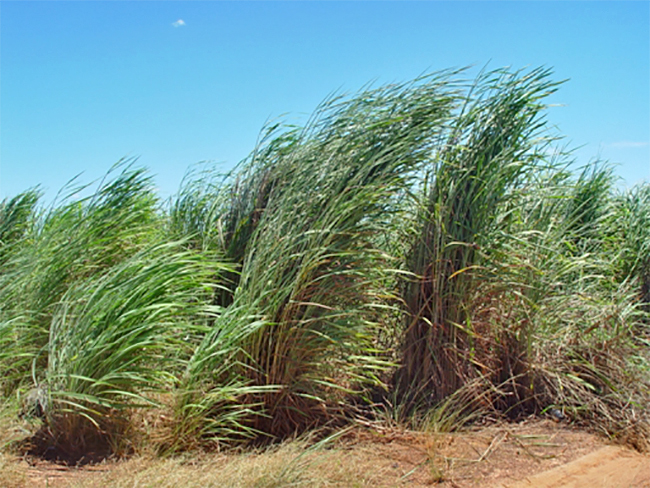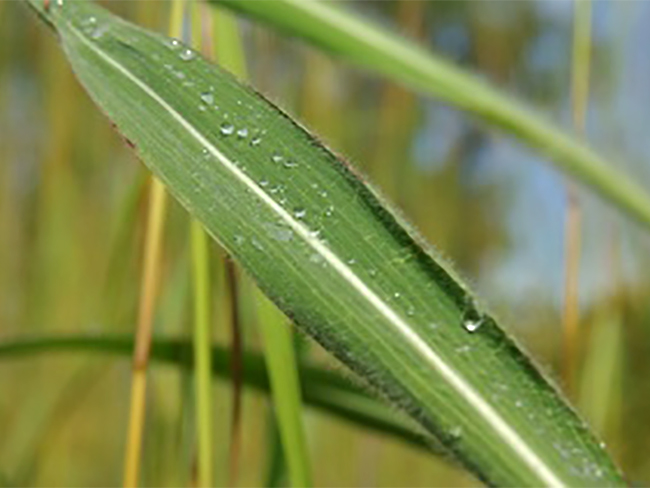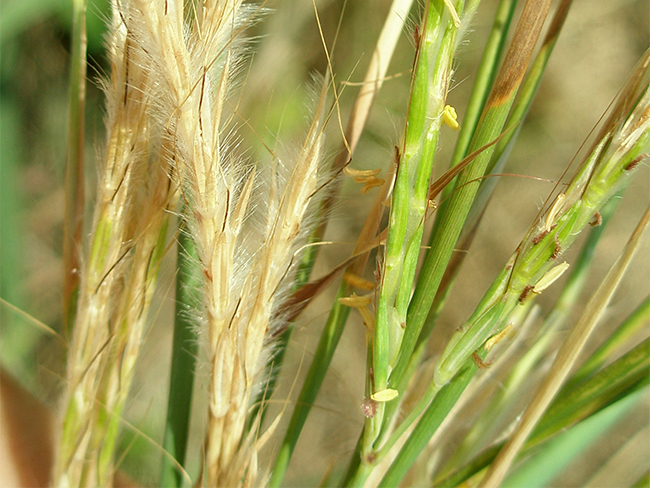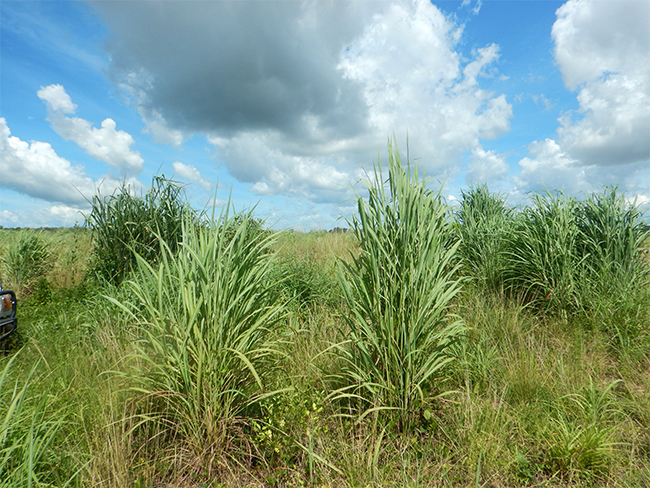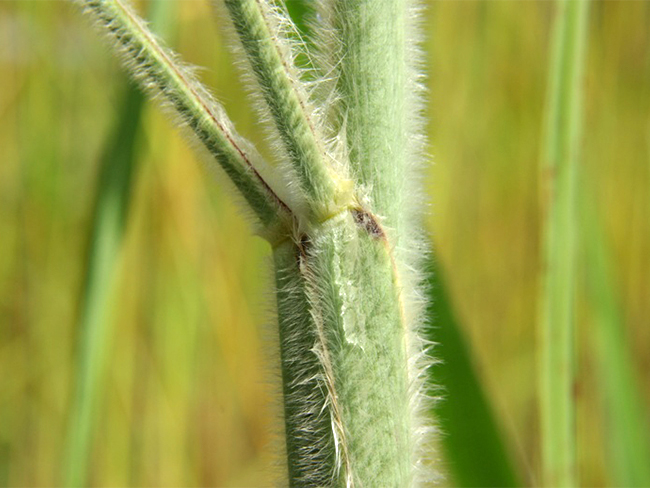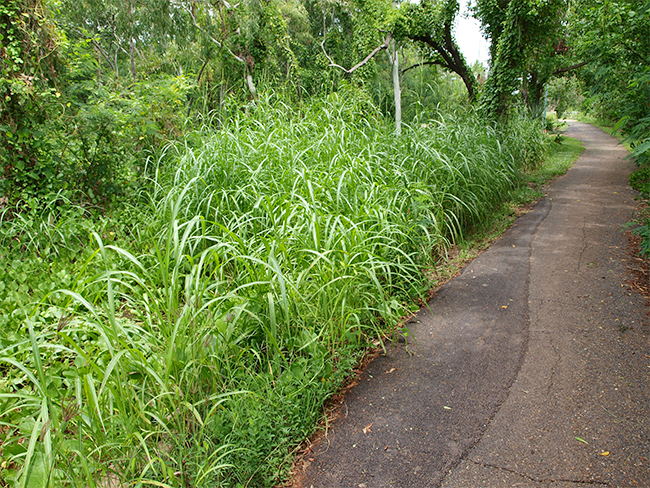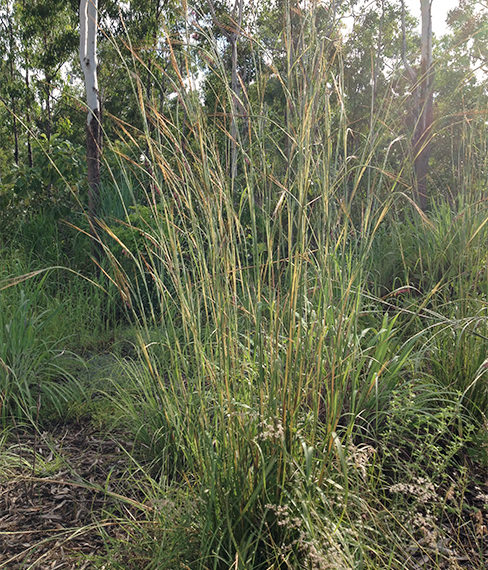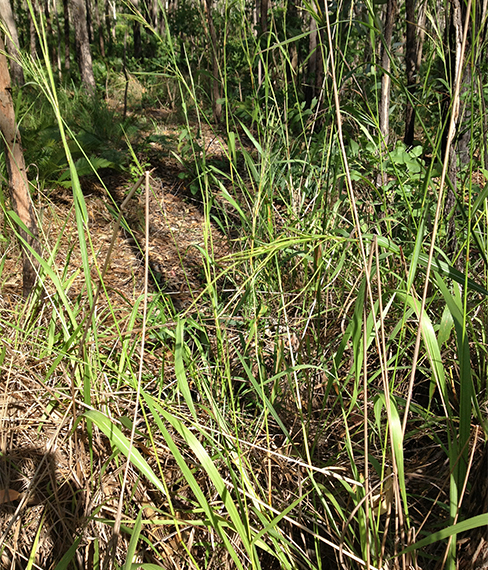Gamba grass
Scientific name: Andropogon gayanus
Declaration status: class A except in areas where it's classified as class B
Gamba grass is a Weed of National Significance. For more information on weeds in Australia, go to the Weeds Australia website.
Impact
Gamba is a highly invasive weed that creates high fuel loads.
It can cause uncontrollable, hot and intense fires that affect people, properties and communities.
Gamba grass fires burn hotter than native grass fires and can destroy:
- vegetation
- large trees
- animal shelters.
Read about gamba's origin, habitat and distribution.
Legal requirements
If you're a landholder with gamba grass on your land, find out your legal responsibilities.
For annual reporting against the plan, go to the Department of Lands, Planning and Environment website.
Identification
Use the below characteristics as a guide to help you identify gamba grass. There may be other plants or weeds that look similar.
- Tussocks can grow to 4m high and up to 70cm in diameter.
- Stem and branches are robust and covered in dense, soft white hairs.
- Leaves:
- are broad and can grow up to 1m
- have a distinctive white midrib and fine soft hairs
- stay green after native annual grasses have died off.
- Seed heads:
- are v-shaped and fluffy
- develop above the leaves on thick stems.
View a 3D interactive model of this weed below.
© Regional NSW through NSW DPI Invasive Species Biosecurity
Model created by Rachel Klyve
To find out more, read the:
- guide to identifying gamba grass and other Top End tussock grasses PDF (2.1 MB)
- gamba grass fact sheet on the Territory Stories website.
Similar looking plants
While you must control gamba grass on your property, you should also avoid accidentally removing certain beneficial native grasses.
These native grasses will compete with the invasive weeds and help the native bush to regenerate.
The below plant species look similar to gamba grass.
Report problem gamba
If you find unmanaged gamba grass, you can report a concern.
Land managers can report gamba grass presence, absence and how it's controlled through the NT WeedMate App.
If you're in a class A zone, you have to report gamba grass presence and absence as part of the mapping and monitoring program. Read more about the program on plans and strategies.
Prevent and control
Everyone is responsible for gamba prevention. Learn about gamba spread prevention.
Find out how to control gamba grass including:
- types of control methods
- videos on mixing and spraying herbicide.
You can also read the national best practice management manual for gamba grass on the Weeds Australia website.
Where to get help
You can access free herbicide, equipment loans and advice through the gamba action program.
Read more about the program and find out how to get free herbicide and loan spray equipment.
Plans and strategies
To find out how gamba is being managed and reported on, read the plans and strategies.
You can also read about gamba grass plans, research and resources on the Australian Government's Department of Climate Change, Energy, the Environment and Water website.
Contact
If you have any questions, contact the Weed Management Branch.
Share this page:
URL copied!
